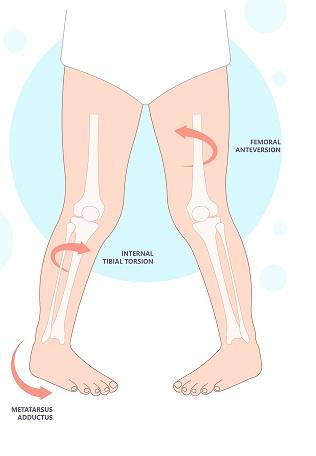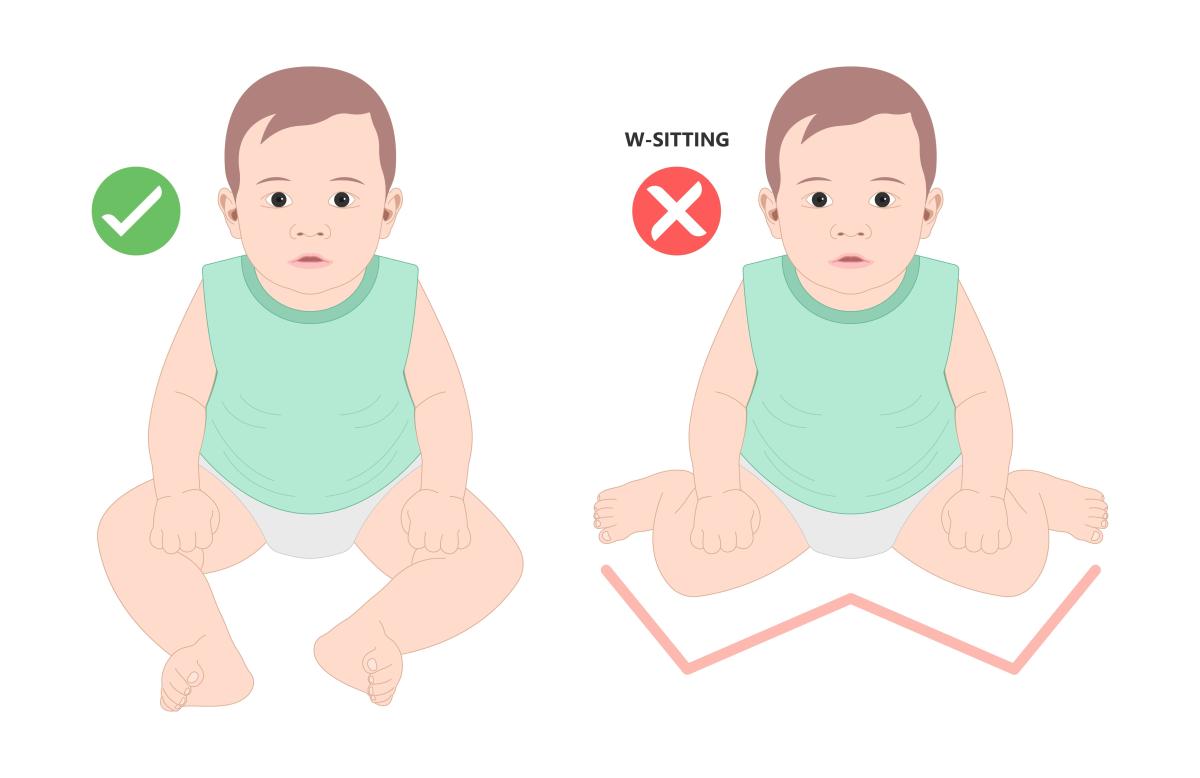What is Intoeing?
Some children’s feet turn in when they walk. This is called intoeing or ‘pigeon toe’ and is very common in young children. It is one of the most common normal variants (Normal variants refer to normal development of the musculoskeletal system, in particular the lower limbs)

What problems may occur?
Children who intoe may appear to trip more often at first but this soon resolves. They can be just as good at sport and are no more likely to suffer back or hip problems or arthritis than anyone else. It will not get worse and should improve over time. Falling is not caused by intoeing but is part of the process of learning to walk. Intoeing will not affect your child’s ability to walk, run or jump in the long term.
Intoeing may be more obvious if your child has flexible joints or when they are tired.
What causes it?
There are four main causes for intoeing gait in a healthy child:

- Femoral anteversion: this is where the femur (thigh bone) turns inwards causing the whole leg to turn in and is the most common cause of intoeing. It is most evident between the ages of 2-4 and will usually resolve spontaneously by the age of 10. This is twice as common in girls as boys and can run in families.
- Tibial Torsion: this occurs when the shin bone is twisted causing the foot to turn in even though the kneecaps point forwards. This will normally correct by age 4-5 as the bones grow, the walking pattern matures and the knees straighten. Splints or special shoes are not necessary.
- Metatarsus Adductus: this is when the foot curves in and often results from cramped space in the womb and is evident from birth. Most will resolve spontaneously but in severe cases when the foot is stiff, stretches or advice on footwear may be necessary.
- Tight or weaker muscles: The hamstrings are the muscles at the back of the thigh and tightness in these muscles can also cause intoeing. Following a growth spurt, tightness may cause intoeing to worsen. A programme of stretches may help improve this. Sometimes, the muscles on the outside of the hip that turn the leg out can be slightly weaker resulting in the legs turning in—strengthening these muscles can help in some cases.
What can I do to help?
- There is no evidence to suggest splints or special shoes produce any benefit but good quality, well-fitting shoes are recommended.
- Encourage your child not to ‘W sit’ but to cross leg sit instead to stretch the hips in the opposite direction, if it is comfortable for them to do so.

- Out-toed activities such as ballet, horse riding, martial arts or swimming breast stroke may help an intoeing gait.
- As your child gets older, practising activities to strengthen the hip muscles such as out-toed walking (penguin walking) or walking along a straight line (keeping feet straight) may help.
- Intoeing is a normal variant of development so you do not have to restrict your child’s activities unless specifically advised to do so.
